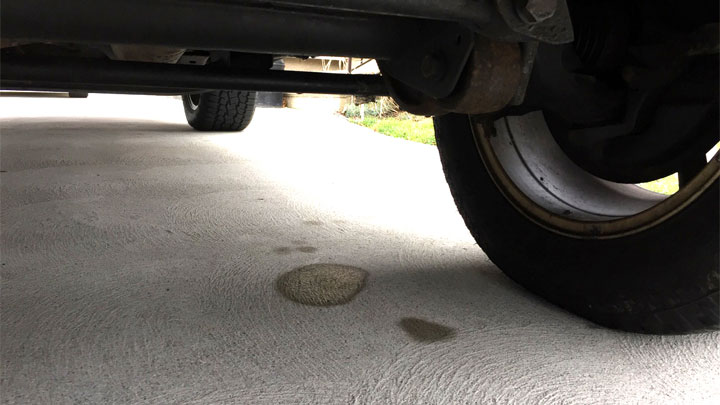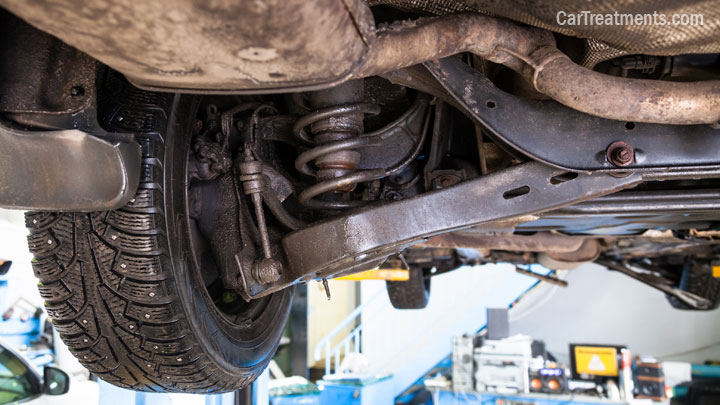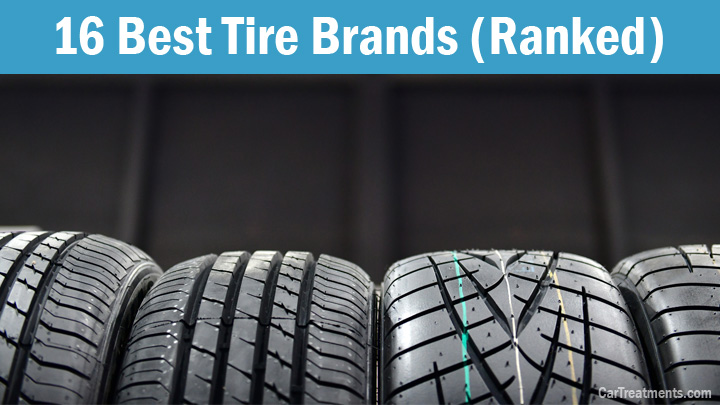Last Updated on March 24, 2022
The function of shock absorbers is to make sure the tires of your vehicle stay on the ground consistently. They do this by managing how the suspension and springs move.
This allows your tires to always be making contact with the road whether driving straight, cornering, going over hills, or driving on a bumpy road. All the vibrations and shakiness from driving on such a road get absorbed by a vehicle’s springs and shock absorbers, hence the name.
Do not confuse a shock absorber versus a strut because they have differences. The strut is built into the structure of the suspension system while the shock absorber connects two parts of the suspension together. In other words, all the vehicle’s weight is placed on top of the strut and not the shock absorber.
Read Also: 5 Signs of Strut Mount Failure
What is a Shock Absorber?
Commonly referred to as a “shock”, a shock absorber is a suspension component which is responsible for controlling the up/down motion of a vehicle’s wheels.
While springs are what mainly handle the energy absorbed from bumps in the road, without shock absorbers, your vehicle would continue to bounce on the springs for a time after hitting a bump.
Shock absorbers absorb this unwanted spring motion. This process is known as dampening and it’s critical unless you want to drive with very little control.
Top 6 Bad Shock Absorber Symptoms
One or more shock absorbers can eventually go bad and ultimately fail to work. A lot of people have trouble figuring out which one has gone bad when strange symptoms arise. Below are six of the most commons signs that could indicate you have a faulty shock absorber.
#1 – Knocking Noise

When going over various bumps, speed bumps, or potholes and your hear a knocking sound, it likely means you have worn shock absorbers. The noise may be the meal coil springs actually hitting your car’s chassis.
The points on each end of the shock absorber contain rubber bushings. All it would take is for a crack to form in the rubber bushing and it will result in a tapping or knocking sound that you can hear each time you hit a bump while driving.
#2 – Vibrations

The shock absorber has valves and piston seals inside of it. If either one of them gets too worn, the flow of fluid won’t be controlled, and it will move through the piston seal and/or valve.
Once that happens, the steering wheel will vibrate each time you drive over a bump, regardless of how big or small it is.
#3 – Fluid Leak

The shock absorber’s body has seals to protect it from leaking. After a while, these seals will start to leak fluid along the side of the shock absorber’s body until it falls on the ground.
If the shock loses too much fluid, then it won’t be able to function properly.
#4 – Swerving

If you step on the brake pedal while turning, you may experience swerving or nose diving. When the shock absorber is faulty, the weight of your car will move in the opposite direction while you’re turning.
This will cause you to swerve and it will take more work just to fix the turn toward the direction you want to go.
#5 – Brakes React Slowly

If you step on the brake pedal and your car takes a while to slow down and stop, then there’s a possibility your shock absorber might be faulty.
This could arise from the length of the piston rod not being taken up fast enough by the vehicle. So, the vehicle needs more time to complete this task.
#6 – Uneven Tire Wear

Since a bad shock absorber will cause your tires to be unevenly placed on the road, your car will begin to bounce as you drive on it.
Only certain areas of your tire will actually be touching the road, which will result in these areas becoming more worn than the areas which are not touching the road. Therefore, you will have uneven tire wear, whether it be on the inside or outside.
Related: Common Symptoms of Unbalanced Tires
Shock Absorber Replacement Cost
Best places to order parts? See: 19 Best Online Auto Parts Stores

If you discovered that you have a bad shock absorber, you will need to replace it as soon as possible. Since shock absorbers should always be replaced in pairs, expect to pay somewhere around $250 to $580 in total.
A single shock absorber will cost anywhere from $50 to $140, depending on the make and model of your vehicle so for the pair, you’re looking at $100 to $280 in parts.
The labor costs associated with replacing a pair of shock absorbers will be somewhere in the neighborhood of $150 to $300, depending on the hourly rate of the shop or mechanic as well as the ease of access on the particular vehicle.
While it’s not too expensive of a procedure, make sure you get the shock absorbers replaced promptly before more significant damage occurs to your vehicle.
See Also: Average Shock and Strut Replacement Cost
Can You Drive With a Faulty Shock Absorber?
Unless a shock absorber completely fails, you can usually drive with it in the early stages of it wearing down although replacing it (and the one on the other side of the axle) should be done as soon as possible.
BUT, certain symptoms above have a greater urgency for you to stop driving right away. Leaking fluid and any symptom which causes less driving control should cause you to stop driving until you get your shocks replaced.
Ignoring this can put you and others in immediate danger while on the road due to a sudden loss of control.





Hi,
you guys are awesome, clearly point out the reason for bad shock absorbers.
But, going through this article, I got stuck into point number 5 (brakes react slowly).
Now, I am curious to know which are the other reasons to slow down and stop car?
Regardless,
Lewis
Vibrations that get worse as you drive are a great reason to pull over and inspect the vehicle.
How can you tell if your problem is shocks or if you need a lube when you here squeezing?
Bad shocks will leave your car bouncing over bumps like a trampoline.